Tropical Imelda storm was formed in the Atlantic Ocean on Sunday and could affect the southeast coast of the United States in the next week.
After becoming the ninth storm of the Atlantic hurricanes season on Sunday, the tropical storm Imelda continues to maintain its strength over the Southwest Atlantic. He will continue to track north over the Bahamas until Monday, where he is bringing tropical storm conditions.
At 11 pm, Imelda focused about 320 miles southeast of Cape Canaveral, Florida, producing maximum sustained wind speeds of 40 mph and higher bursts.
There was a burst of 47 mph in Blue Lagoon Island, just northeast of Nassau, Bahamas.
Both North Carolina and the South declared emergency states before the dangerous climate planned.
“The North Carolinians of the entire state must prepare for the tropical climate to bring strong rains and potential floods,” said Governor Josh Stein in a statement on Sunday.
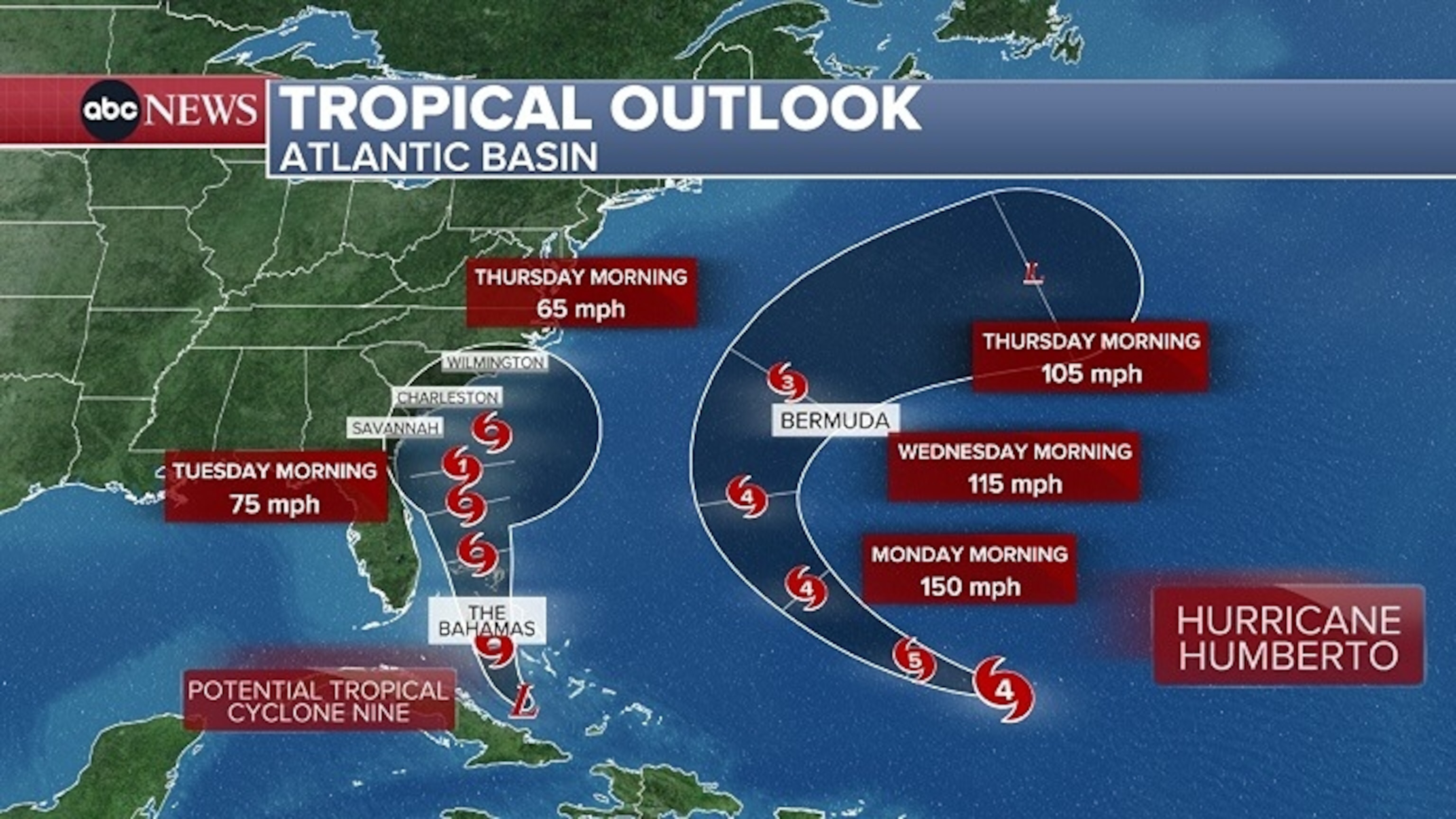
This ABC News chart shows two current storm systems of the Atlantic Ocean.
ABC News
For now, a tropical storm surveillance for the east coast of Florida Central has been issued. A tropical storm warning continues for most of the Bahamas.
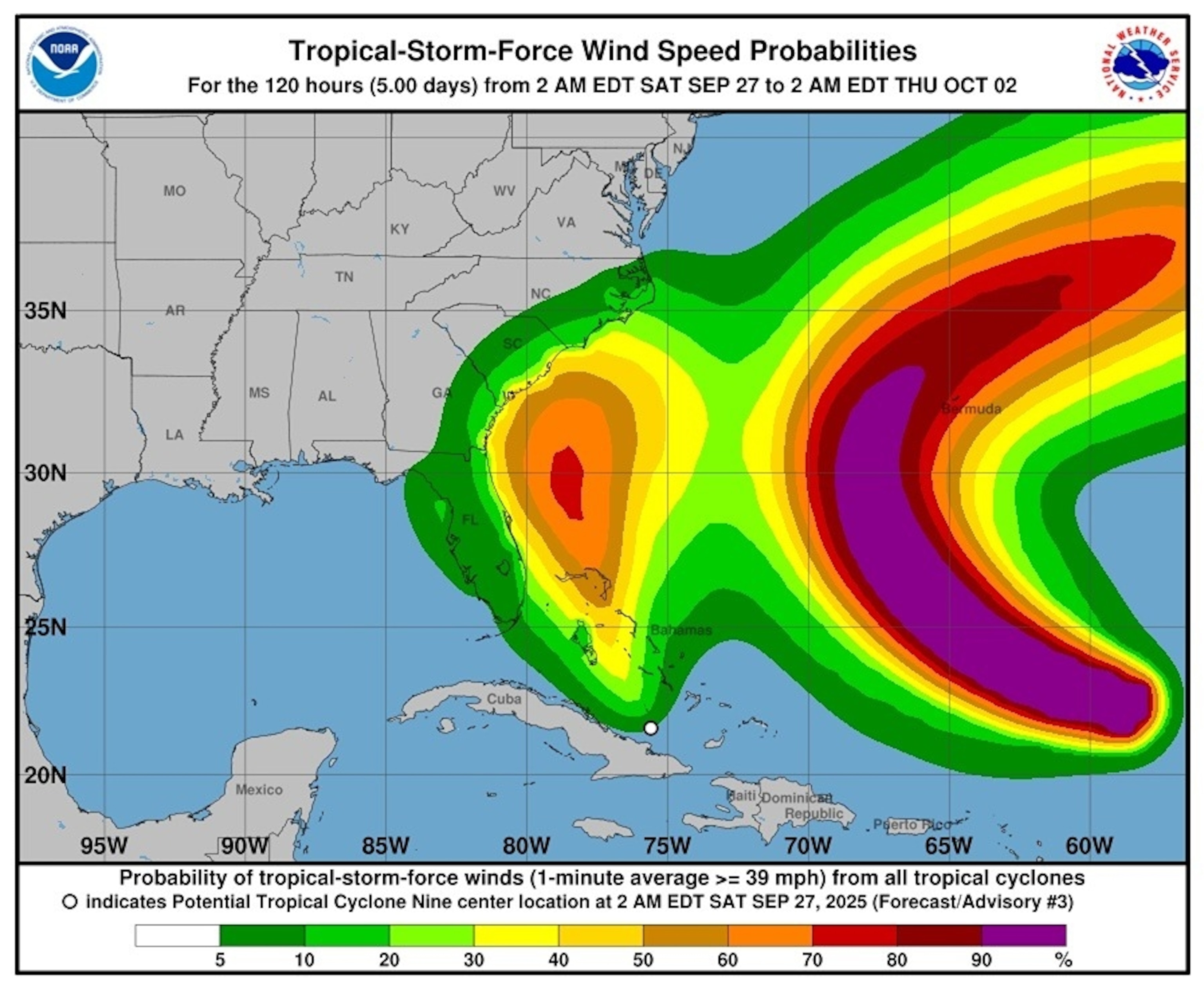
This National Hurricane Center shows the prognosis of a tropical storm that moves to the United States coast.
National Hurricanes Center
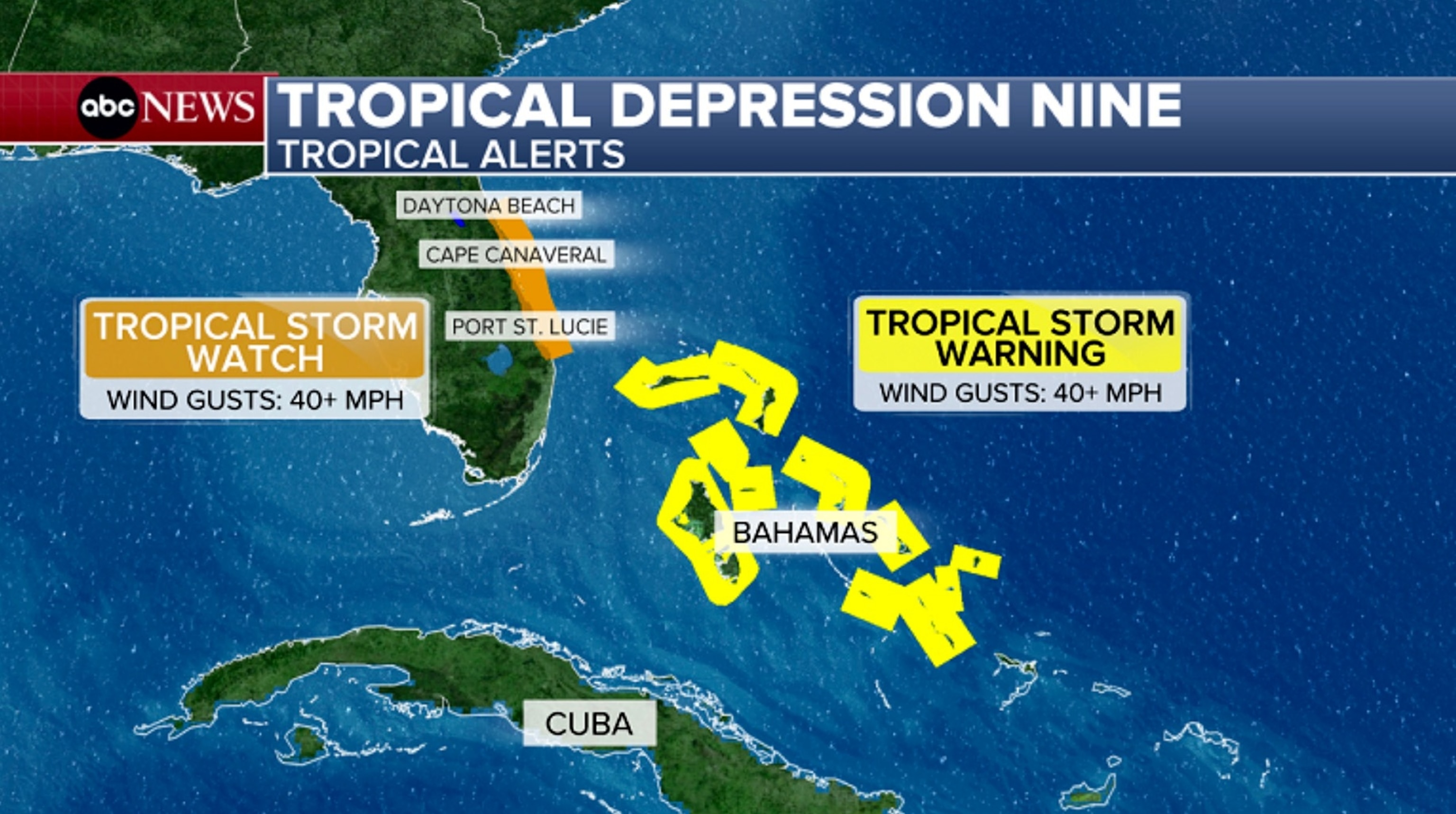
Track the path of developing storm
From Sunday to Monday, Imelda will track north through the Bahamas and parallel to the east coast of Florida, where it will hit the Bahamas with heavy rains and wind storm force winds.
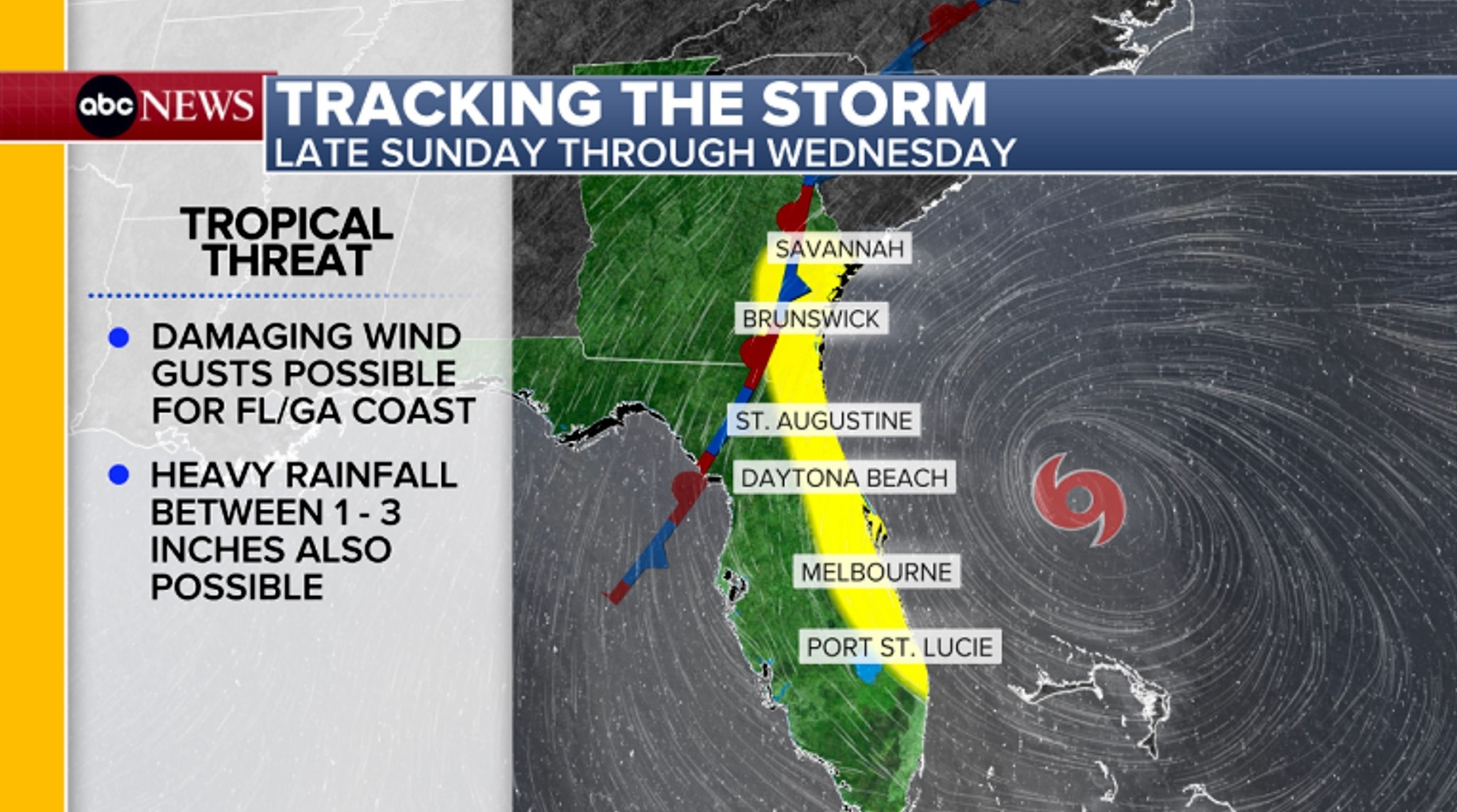
While there is still some uncertainty with the track due to a complex direction configuration, the weather models begin to align with the storm that begins to decrease as it approaches the coast of Georgia and South Carolina, then turning hard to the east and avoiding earth thanks to a “pull” from the strong Humer Humberto to the east near Bermuda.
Carolina coast for possible impacts
Around Tuesday, the system will be close to the coast of Georgia and South Carolina, as possibly a strong tropical or hurricane of category 1 weak, and this is where the strongest rains and the strongest winds for the Carolinas will be exhibited.
Cyclonic swells and coastal floods for the Carolinas and the coast of Georgia will also be possible for the first half of next week.
This storm will interact with a stagnant front that will be covered with the southeast coast this weekend until next week, which will allow multiple days of rain through the coast from Georgia to Virginia.
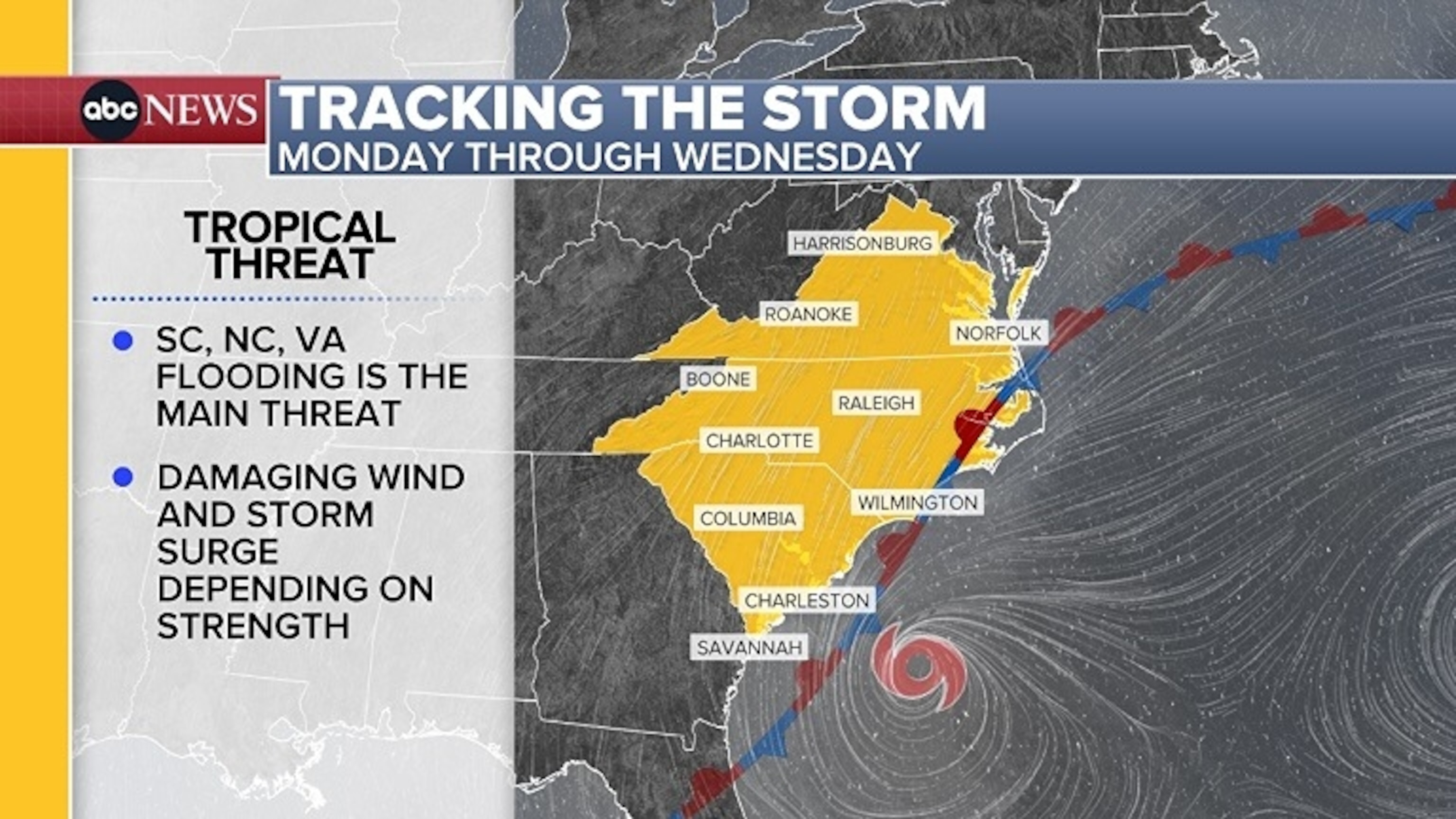
This ABC news chart shows the time forecast for the storm incoming systems of the Atlantic.
ABC News
Although a land looks more and more unlikely, the coast to Virginia is expected to see indirect impacts. There will be some rain, moderate wind bursts and coastal floods of a prolonged ground flow.
The governor of South Carolina, Henry McMaster, declared an emergency state on Sunday, but said the State “has no intention of issuing any mandatory evacuation order for the next storm, but that people should not” be deceived. “
“We know that we are going to have strong winds, we know that we are going to have a lot of water,” said the governor.
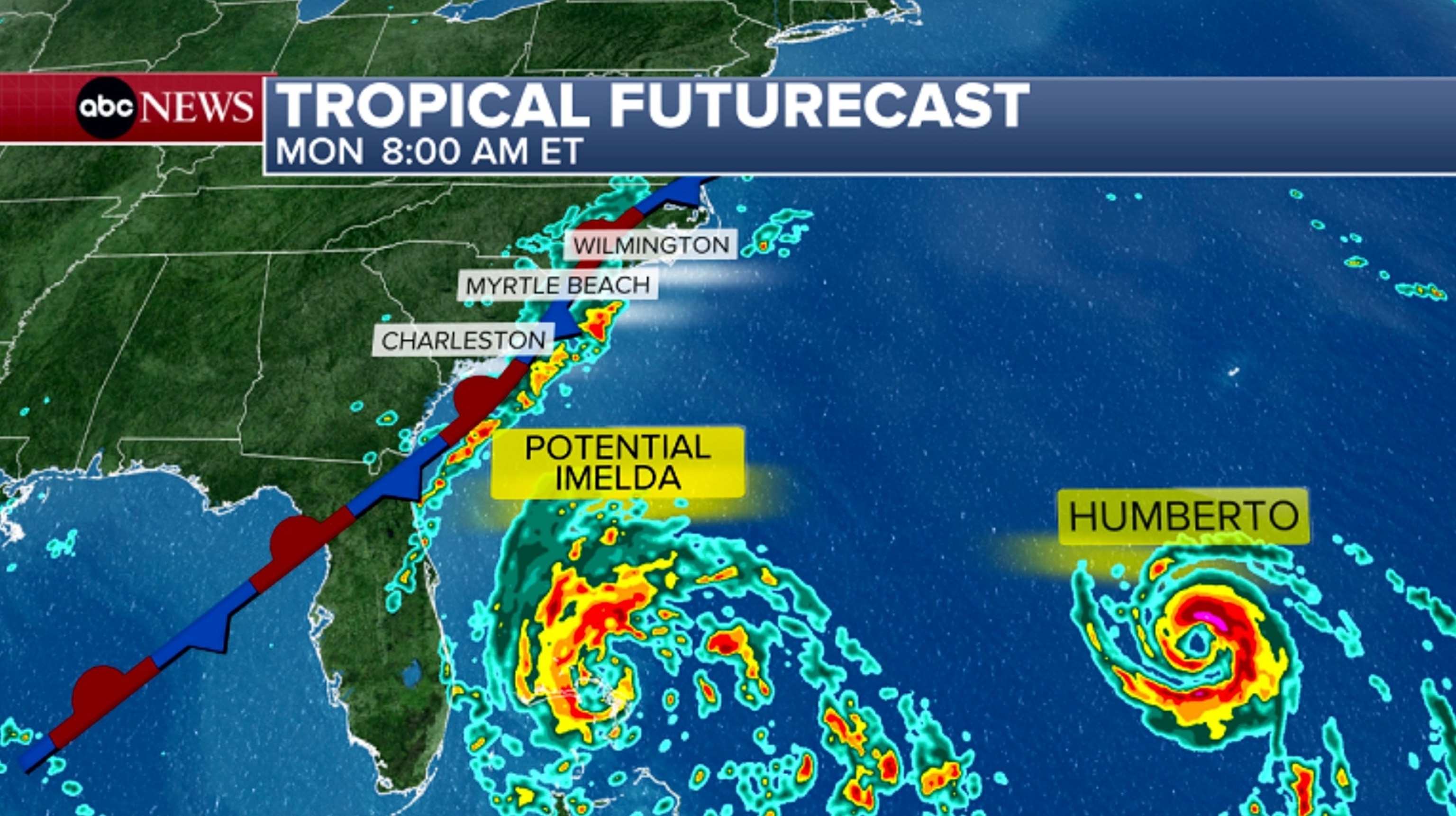
McMaster also invoked Hurricane Helene anniversary to compare it with the uncertainty of this storm.
“We remember that it was not exactly where to go,” he said. “This storm does not look as strong as it looked yesterday, but that could change tonight.”
The governor said that he is “waiting” that the federal government cooperates and that Friday’s emergency declaration was to get people and teams in the right places, including helicopters and air resources.
“The good news is that the storm will probably keep out in the ocean,” McMaster said, however, he warned people who are prepared. “Do not drive for stagnant water … we lose many people through drowning,” said the governor, which called him “unfortunate.”
The city of Charleston, South Carolina, also issued a local state of emergency by caution.
“Today’s action is about preparation,” said Mayor William Cogswell. “Our equipment is cleaning the drains, organizing bombs and barricades, and adjusting the staff so that we can respond quickly if the conditions get worse.”
What to know about Humrican Humberto
Meanwhile, Humberto remains an important category 4 hurricane, producing maximum sustained wind speeds of 140 mph.
It is 430 miles south-southwest of Bermudas and will continue to advance northwest until Monday before becoming northeast on Tuesday until Wednesday, curving west and northern Bermuda.
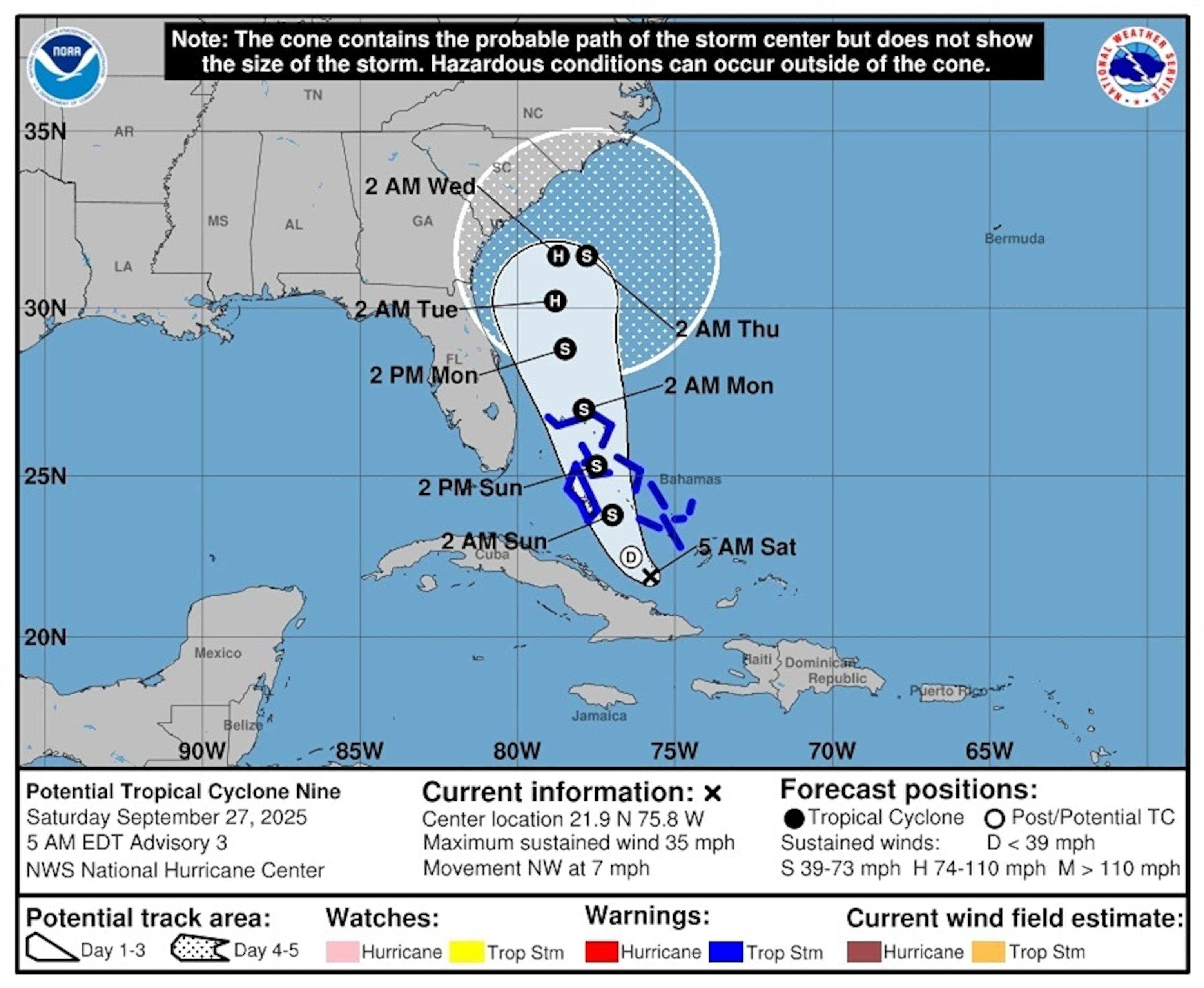
This National Hurricane Center shows the prognosis of a tropical storm that moves to the United States coast.
National Hurricanes Center
Although the center of the storm will remain on the high seas with some small fluctuations in intensity, Humberto is expected to remain a great and dangerous greater hurricane in the next few days.
It is forecast that it will be gradually weakened once it acquires a more northeast trajectory, but it will still generate high surfs and dangerous hangover currents along the east coast of the United States and Bermuda.




